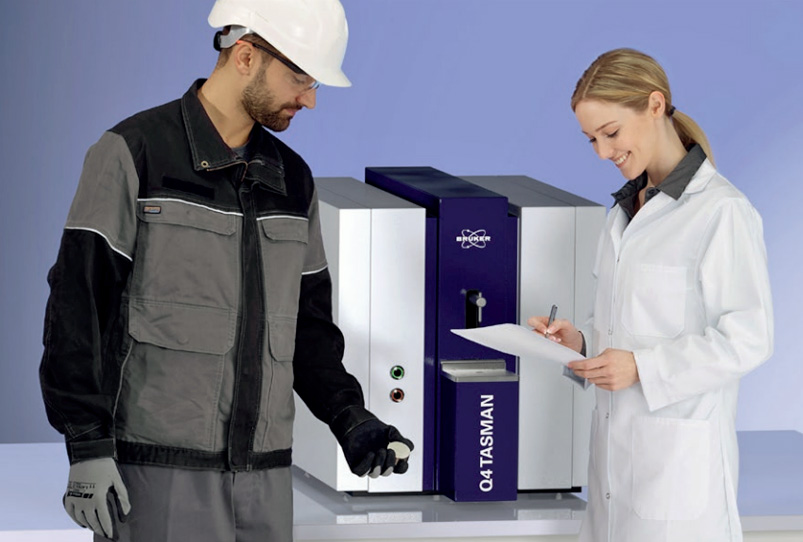For industrial processing and foundries


The Bruker Q4 TASMAN Series 2 is an OES (Optical Emission Spectrometer) for metals analysis. The analytical range in the second generation system includes new elements and alloy types, with applications packages for the ten most common metal bases: Fe, Al, Cu, Ni, Co, Pb, Sn, Zn, Mg and Ti.
For industrial processing and foundries
Reduced argon gas consumption
Iron and steel, aluminum, copper and more – and non-ferrous metals
Small components, tubes, wires and sheets
The analytical range has been extended to include new element sets and alloy types. Dedicated packages are available with full element sets, calibrations, alloy groups and standardisation samples. These packages are available for all ten common metal bases and their alloys:
Incoming inspection often involves analysing small components or semi-finished products such as tubes, wires and fittings, which can be tricky to handle on a spark spectrometer.
The Q4 TASMAN has several features to make this easier:
The Q4 TASMAN Series 2 has an optimised digital spark source and optimized co-axial argon flow design, which brings several benefits:
How does it work? Matrix-optimised, high-energy pre-sparking is applied to homogenise the sample surface, reducing matrix effects and increasing accuracy.
The low-maintenance spark stand is freely accessible from three sides and equipped with a large, robust sample stage. A pneumatically-driven sample clamp supports sample heights of up to 120 mm, for convenient sample handling.
MultiVision is an innovative new dual optics concept. Choose between three variants for the optimum set-up for your analytical requirements. It’s also more reliable, with low argon gas consumption for reduced cost of ownership.
Take a look at our range for metals analysis and process control in production.
The Bruker Q4 TASMAN Series 2 is a new, high-performance spark-Optical Emission Spectrometer (OES) for the metals industry.
As the steel industry works to reduce its carbon footprint, working towards climate neutral production, elemental analysis is required to maintain and monitor product quality. OES (Optical Emission Spectrometry) is a useful metals anlaysis technique to monitor concentrations of vital elements at all stages of production and recycling, as processors work to reduce emissions without compromising quality or steel grades.